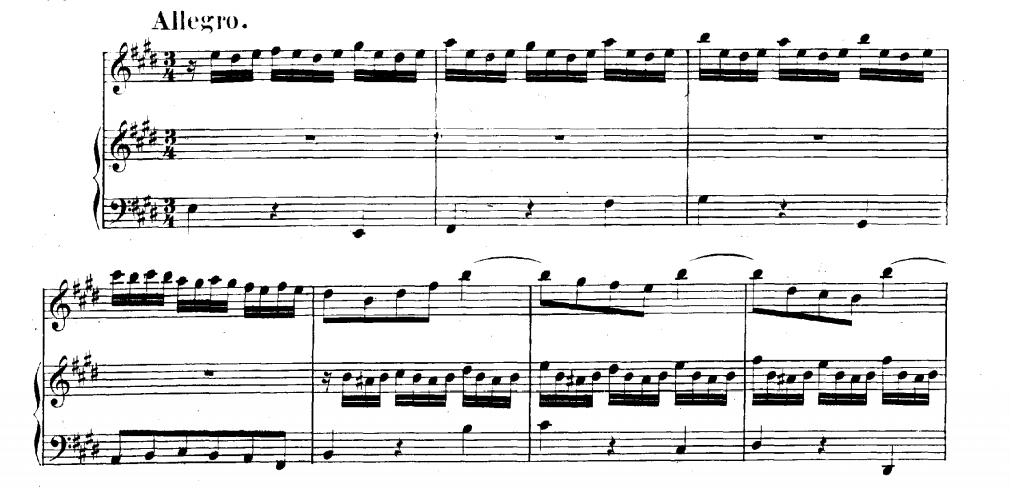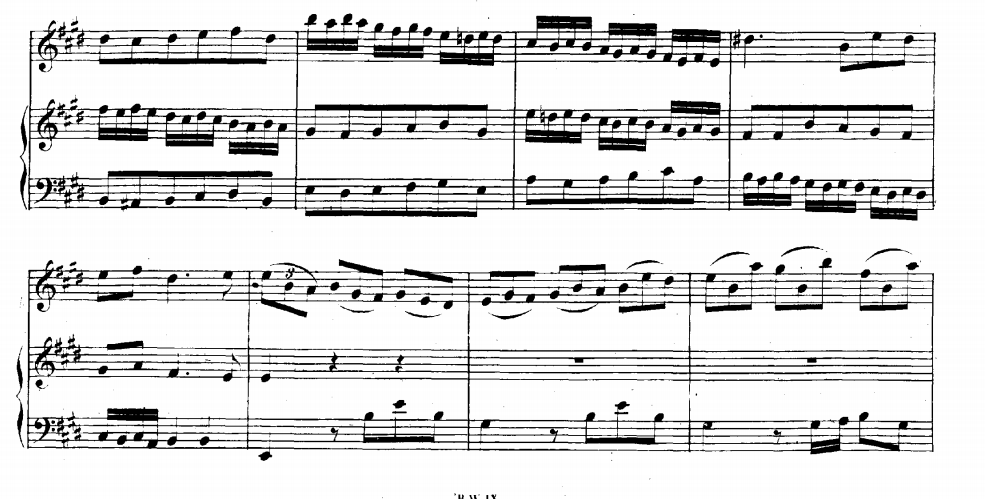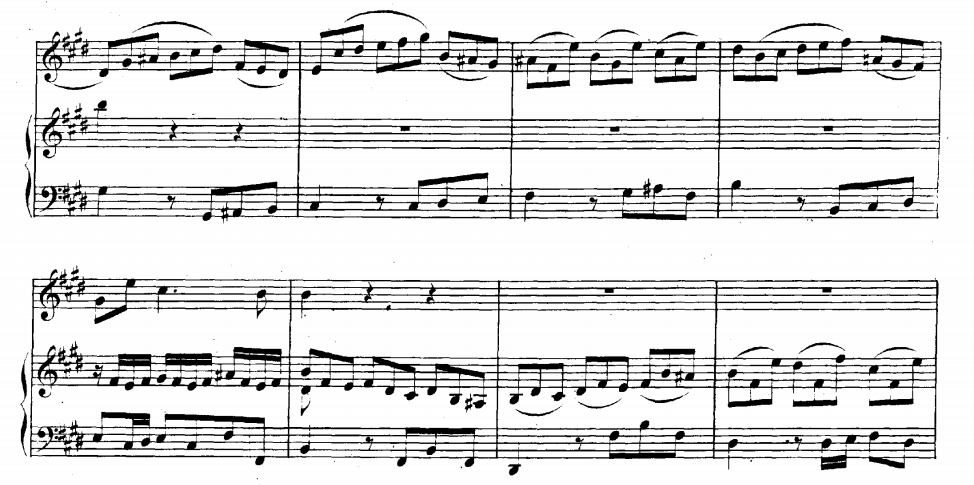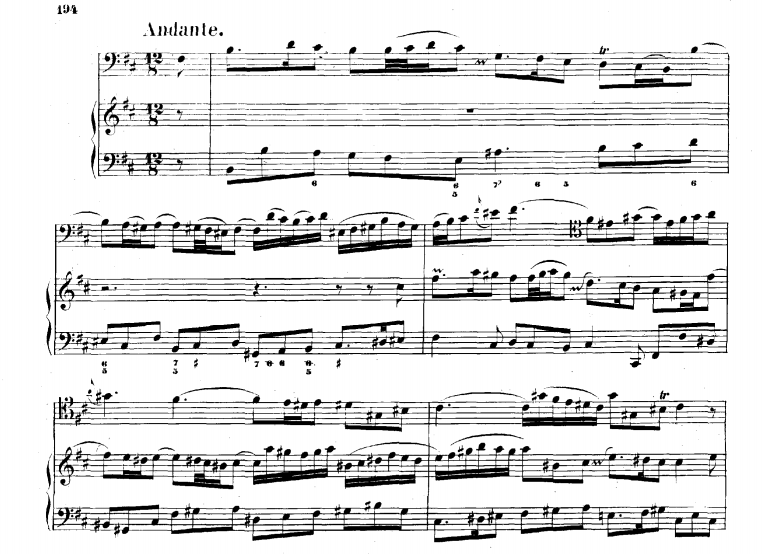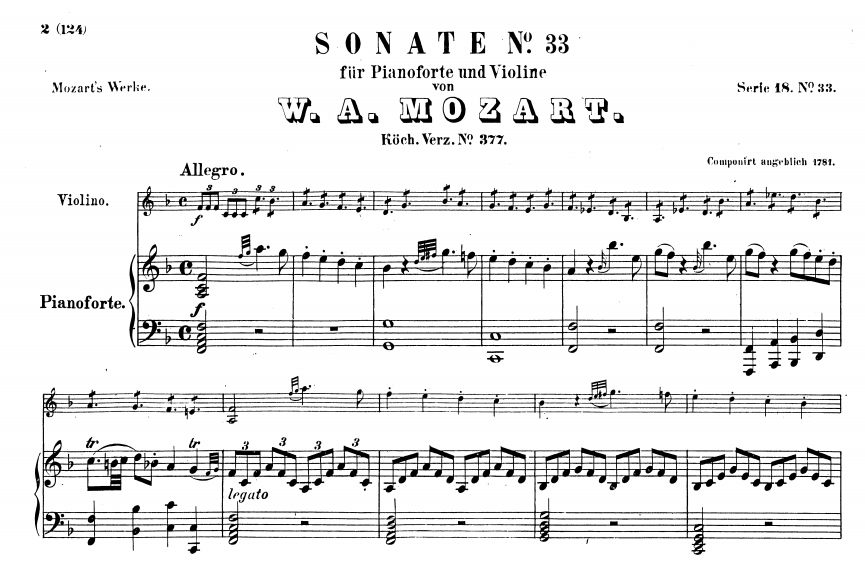I always learn something playing with my piano trio. Dawn, the cellist, is a seasoned symphony player. I marvel at her ability to keep track of where the beat is with such fierce accuracy despite not being able to see the other parts she is playing with.
Yesterday we were playing the last movement of the Bach violin sonata in E major BWV 1016.
It begins with a healthy duple feel. Suddenly he introduces triplets in the violin part. The continuo (cello and keyboard) continues in duplets. Later the violinist said that it was a good mental exercise.
This was especially difficult since we often read under tempo. At a quicker tempo it would have been easier.
Eventually the treble part of the keyboard part also does triplets against duple in the rest of the ensemble. Usually the continuo part is just the bass part with some indications of what chords should be played by the third instrument which could be keyboard or even lute. One of the things I like about theses sonatas is that Bach composed the right hand of the keyboard part making it much more interesting for me. The cello (which is doubled by the left hand of the keyboard player) never does triplets in this movement.
I marveled at Dawn’s ability to keep her steady duple playing often correctly after the beat despite the disturbance of the rhythms in the other parts.
Earlier she and I had sight read through some of Bach’s Gamba sonata in D major BWV 1028 which were quite tricky especially the 12/8 movement.
It is a pleasure to watch her read with such clarity and accuracy.
It is also an education and a pleasure to work with my violinist Amy. She has fallen in love with a Mozart violin sonata movement which we rehearsed yesterday.
Our edition is marked in cut time. After we had played through the movement Amy and I talked about what was happening with the music. Sometimes the triplets in the violin and the piano are thematic, sometimes they are accompaniment. I discovered that she was counting this as written in 2. I was counting it in 4. We did again and the results were pretty amazing when I also felt it in 2.
In the excerpt below, when we played it and I was counting in 4, I would beat Amy to the two eighth notes. Amy put a musical very slight hesitation at the point where the red arrow is.
When I counted the piece as she did, I noticed how natural and musical it was to do that.
How about that?
